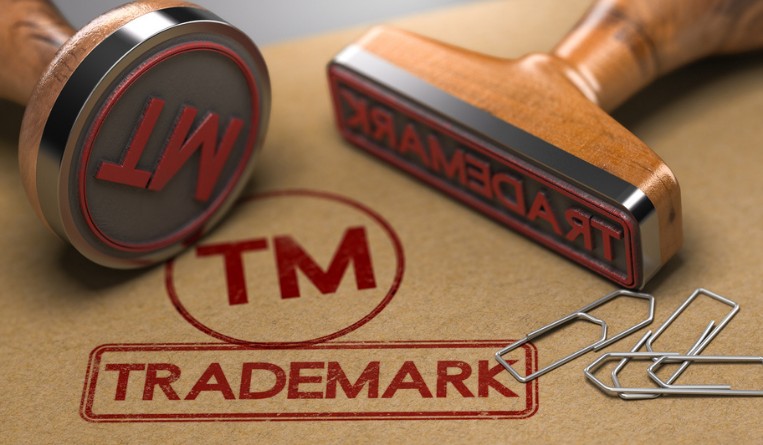Well-known trademarks in India
30 November 2021

According to the World Intellectual Property Organization (WIPO), “A trademark is a sign capable of distinguishing the goods or services of one enterprise from those of other enterprises. Trademarks are protected by intellectual property rights.” With the introduction of India’s Trademark Rules, 2017, a new process has been established that enables the Registrar to declare a trademark to be well-known. A well-known trademark has been granted exceptional protection against trademark infringement and passing off. A trademark owner may submit an application in form TM-M with a request to the Registrar for the mark to be declared as “well-known” under this new regulation. In India, a well-known trademark is recognized based on its reputation on a national, international and cross-border basis.
Well-known trademarks explained
Unlike other trademarks, which are confined to their goodwill and reputation in a certain geographical region and a specific range of products, well-known trademarks have their goodwill and reputation protected throughout the country and across categories of goods and services. It is not permitted to accept and register any trademark that is confusingly similar to a well-known trademarks. For example, Google has been registered as a well-known trademark by Alphabet Inc., which implies that only Alphabet Inc. may register the word Google for any category of products and services. Even if the services to be registered may be unrelated to Google, only Alphabet Inc. has the right to register Google as a trademark. According to the Trade Marks Act of 1999, “A mark that has become so well-known to a substantial segment of the public who uses such goods or receives such services that the use of such mark in relation to other goods or services would be likely to be taken as indicating a connection in the course of trade or rendering of services between those goods or services and a person using the mark in relation to the first mentioned goods or services.”
Benefits to a well-known trademark owner
In the event that a well-known trademark is misappropriated or infringed upon, the trademark owner has the following recourse:
- Prevent the registration of confusingly identical trademarks across all classes of products and services. In the case of Rolex SA v. Alex Jewelry Pvt. Ltd, Rolex dealt with watches and the section of the public using watches recognizes the trade name Rolex, for which it is a well-known trademark. The court considered Rolex to be a well-known trademark.
- Request that the infringing mark be removed. For example, while recognizing Daimler Benz’s Benz logo as a well-known trademark, engaging in the business of automobiles, Daimler Benz was granted an injunction against the impugned use of its Benz logo by Hybo Hindustan, which engaged in the business of manufacturing undergarments.
- Prevent the trademark from being used in the name or emblem of any company or organization.
- Punitive damages. In some instances, the courts have ruled that punitive fines should be used to deter infringers from utilizing and diluting well-known trademarks. The court concluded in Time Incorporated v. Lokesh Srivastava that in IP matters, the court must award punitive as well as compensatory damages. In this instance, the court awarded the plaintiff Rs500,000 (US$6,740) in punitive damages and Rs500,000 in compensatory damages for infringement.
A brief summary of the provisions related to well-known trademarks in India
1. Request to the Registrar for well-known trademark registration (Rule 124 of the 2017 Trademark Rules). This rule allows trademark owners to submit a request to the Registrar in form TM-M for the award of a well-known trademark. Prior to the enactment of this rule, a mark was only awarded the status of well-known after it had been contested before the courts. With the introduction of this regulation and the procedures, a trademark owner may seek a well-known trademark without having to go through any formalities before the court.
2. Well-known marks are protected across all classes (Section 11 (2) of The Trade Mark Act 1999). This section broadens the scope of trademark protection available to well-known brands. Well-known trademarks must be recognized and protected across all classes of products and services.
3. Factors considered in assessing whether a trademark is well-known (Section 11 (6) of The Trade Marks Act 1999). The factors can be described as:
- Awareness of the mark among relevant sections of the public;
- Extent and the geographical area where the mark is used; and
- The record stating the mark has been recognized as well-known.
4. Conditions not required for registering a well-known trademark. (Section 11 (9) of The Trade Mark Act 1999).Following are certain requirements particularly mentioned that are not necessary for the registration of a well-known trademark:
- The fact that the trademark has been utilized in India;
- That the trademark is registered;
- That the trademark registration application was submitted in India;
- That the trademark is well-known or registered in any country other than India; and
- That the trademark is well-known among India’s general population.
It may, therefore, be claimed that for a trademark to be protected in India, it is neither essential for the mark owner to have a company in India or for the trademark to be registered there, nor is it necessary for the brand to be well-known among the general public.
The procedure for determining a well-known trademark
Determining a mark in India as a well-known trademark
- Form TM-M. To get a mark registered as a well-known trademark, you must submit a Form TM-M application.
- Payment of fees. According to the first schedule of the regulations, the required fee in Form TM- M is Rs100,000.
- Online submission of application. The application must be submitted online using e-filing capabilities at www.ipindia.nic.in.
- Documents in support of the application. In addition, there are several papers that must be submitted with the form:
- A statement of case outlining the applicant’s trademark rights as well as the applicant’s contention that the trademark is well-known.
- Evidence in support of the applicant’s rights and claim, including evidence of trademark use, any applications for registration made or obtained, annual sales turnover of the applicant’s business based on the subject trademark duly corroborated, evidence of the number of actual or potential customers of goods or services under the said trademark, evidence of publicity and advertisement of the said trademark and the expenses incurred.
- Details of successful enforcement of rights pertaining to the aforementioned trademark, if any, including the degree to which the trademark is recognised as a well-known trademark by any Indian Court or the Registrar of Trademarks.
- A copy of any court judgment or Registrar of Trademarks decision in India determining the trademark to be a well-known trademark, if applicable.
- Evaluation of the application by the Registry. Following the submission of the form, the office will evaluate the papers presented.
- Opposition to the mark. If someone objects to a trademark being added to the list of well-known trademarks, they may register an objection with the Trade Mark Registry, outlining their grounds for opposition.
- Reply to the objection by the applicant. The applicant will be given a copy of the objection, and they will have a certain amount of time to submit a counter statement to the objection.
- Judgment on objection. The final judgments will be made when both parties’ sides have been heard.
- Notification to the applicant. If the applicant’s mark is included in a list of well-known trademarks, the applicant will be notified. The Trademark Journal will be notified, and the mark will be added to the list of well-known trademarks, which will be published on the internet.
The factors taken into consideration by the Registry while determining well-known marks
- That the general public is aware of the supposed well-known brand and is able to identify it, as well as the awareness gained via marketing.
- The number of actual or potential consumers of the goods or services.
- Trademark has been determined to be well known in at least one relevant section of the public.
- The record of successful enforcements of the rights in the trademark.
- The business circle dealing with the goods and devices.
- The number of persons involved in distribution of the goods or services.
- Where any court or Registrar has found that a trademark is widely recognized in at least one relevant part of the Indian public, the Registrar must consider such trademark for registration under this act.








